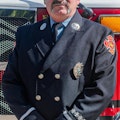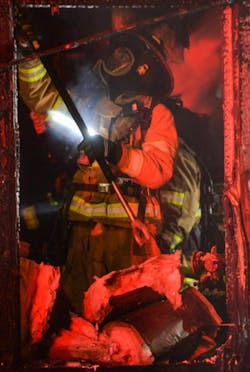Don’t Let Your Guard Down: 12 Firefighter Overhaul Best Practices
It’s easy to feel a sense of relief once the fire is knocked down. The adrenaline slows, the chaos subsides, and we begin to transition into what many consider the “cleanup” phase: overhaul. However, this is exactly when we must double down on our awareness.
Structural failure with little warning
Overhaul isn’t the time to relax or to go through the motions. In fact, it can be one of the most dangerous stages of a fire scene. Often, the structure or building, which already is weakened by heat, flames and water, is on the verge of failure. Roofs can collapse, floors can give way, and compromised walls can fall with little warning.
Unfortunately, it also is the time when firefighters are most likely to let down their guard. Complacency can creep in when we believe that the danger has passed, particularly after having spent hours on scene or in extreme conditions. We must remember that fire doesn’t just destroy what we see; it eats away at the skeleton of houses and buildings. Trusses, joists and load-bearing supports might look intact but can fail without notice.
Situational awareness and communication
It’s critical that firefighters approach overhaul with the same mindset that they carry into active fire attack: situational awareness, communication and a respect for the hazards. That means full PPE stays on, SCBAs are worn if there’s any chance of toxic exposure, and crews are rotated to avoid fatigue.
Every scene is different, but a few best practices always apply:
- Conduct a thorough risk assessment before entering the premises for overhaul.
- Identify and mark any known structural hazards for the entire crew.
- Use thermal imaging to identify hidden fire or heat signatures.
- Never work alone; keep your crew within visual or voice contact at all times.
- Maintain a strong incident command presence, with active accountability.
- Ensure that full PPE is in place.
- Ensure that a backup hoseline is available.
- Ensure that the RIT stays in place until overhaul is complete.
- Monitor air quality and ventilation and avoid unnecessary exposure.
- Constantly monitor the fire-weakened structure and reassess conditions.
- Keep an EMS crew on scene until units are ready to leave.
- A safety officer should monitor the scene until overhaul operations are complete.
Stay sharp
Overhaul isn’t the end of the fire. It’s the last chapter of a dangerous story. We must finish it with the same caution and professionalism that we employ when we start operations. We owe it to ourselves, our crews and our families to stay sharp until the very last ember is out and the scene truly is secure.
In the fire service, our strength doesn’t just come from how we attack a blaze. It comes from how we protect each other when the flames are gone.
About the Author

Robbie Howington
Lt. Robbie Howington brings more than 25 years of distinguished service to the fire service. He began his career in 1997 as a volunteer firefighter with the Pace, FL, Fire Department, where he moved up through the ranks to battalion chief. Concurrently, he served as a career firefighter at Naval Air Station Whiting Field in Santa Rosa County, FL, where he gained experience in aircraft rescue and municipal fire operations. Howington later served as a career lieutenant with Skyline Fire & Rescue and East Milton Fire & Rescue, both in Milton, FL. Today, he serves with Avalon Fire Rescue District (Milton, FL). He plays a key role in training, leadership development and operational readiness. Howington is a certifiedFire Officer II and Fire Instructor through the state of Florida and a licensed emergency medical technician.
